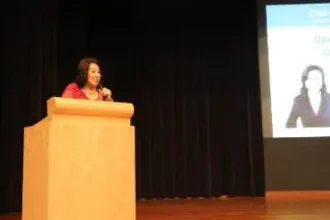For a long time, being “middle class” meant earning a stable income, spending on essentials and little luxuries, and being financially secure. Indeed, the middle class has come to represent economic stability, development, and progress.
Yet, as global events, inflation, and government policies raise costs, many middle-income earners struggle to make ends meet.
Still, is it fair to label this group “the new poor”?
Defining Poverty
The United Nations classifies a person as “poor” if they survive on less than US$2 a day, lack access to basic human needs, and are denied various rights and opportunities.
But while this remains true, various experts and bodies acknowledge that many middle-income earners — e.g., teachers, nurses, engineers, etc. — are also finding it hard to cope. At least one report suggests that if the current situation persists, even things like streaming subscriptions may soon be beyond the reach of this group.
Worryingly, too, the problem isn’t limited to a single region, and the signs are hard to ignore from the United States to India and Pakistan to Ghana.
Why the Middle Class is Struggling

These trends help explain why so many middle class earners are finding it tough to get by:
1. Stagnant Incomes and Rising Costs
Groceries, rent, school fees — everything’s pricier now than just a decade ago. But salaries haven’t gone up in tandem. In India, for example, someone earning Rs 1.5 lakh a month might have once been able to enjoy overseas holidays and sign up for a gym membership.
Now, that income often vanishes before the next pay cheque. It’s a similar story in the United Kingdom, where, due to higher bills, even families earning over £60,000 per annum are feeling the pinch.
2. Debt is Widespread and Growing
Meanwhile, with everyone stretched thinner, more people are accessing credit cards or taking out loans and then defaulting on payments. The situation in the United States presents the most worrying example, where trillions in credit card debts and student loan balances contributed to a total household debt of $US18.20 trillion in early 2025.
However, it’s just as bad in countries like Nigeria, where scores of middle-income earners are failing to repay what they owe on loans taken to cope with rising prices.
3. Savings are Small to Non-Existent
Another concern is that most middle-income earners don’t have much of a financial safety net. Yes, the younger generation may spend more freely. However, many millennials and Gen Z workers do want to save, but just can’t.
For instance, many urban professionals in Pakistan say they can barely manage their monthly costs. And it’s even harder for those supporting extended families. So, putting aside the recommended 20% of one’s income for emergencies and future needs feels impossible.
4. Basic Services Feel like Luxuries
Incidentally, it’s not just about income, debt or savings, but also access to certain basics. For instance, quality healthcare, better housing and private education used to be within the reach of the middle class. Yet, in countries like the United States, Malaysia and the Philippines, private options have become too expensive.
As such, many people have had to contend with underfunded public services or make tough choices when deciding whether to spend on a medical procedure at a private facility or pay their children’s university tuition.
5. Lack of Job Security
Finally, stable middle-income jobs are also becoming harder to secure.
Part of the reason is the rise in popularity of gig work, and another is the advancement of technology and artificial intelligence. Together, these have resulted in middle-income earners finding themselves with less job security or having to work longer and harder.
This can be seen especially in countries like Ghana, where many graduates are stuck in part-time employment, and in India, where contract-based roles in manufacturing, construction, trade, transport and education are becoming more common.
Finding a Way
But despite today’s realities, there’s a silver lining: many people are rethinking their approach to money and work, and finding ways to adapt accordingly.
For instance, more and more are embracing innovation and new technologies, upskilling themselves, and importantly, supplementing their full-time jobs with side gigs and freelance work.
Essentially, it’s about becoming one’s own boss, taking charge, and being in control of the big decisions. This explains why the direct selling industry and leading companies like QNET are currently seeing exponential growth, and why millions of individuals are choosing to own and run direct sales businesses.

Can Direct Selling Help the Middle Class?
Yes, direct selling — with a business model focused on marketing and retailing goods and services directly to consumers — has long established itself as a platform for attaining financial sustainability. In today’s climate, its ability to offer flexibility, security, and community-based support has given the middle class hope and a renewed sense of direction.
Indeed, according to the 2024 World Federation of Direct Selling Associations (WFDSA) annual report, the global direct selling channel still generated approximately USD 167.6 billion in retail sales in 2023, with nearly 103 million distributors contributing to that total. These figures underscore that direct selling remains a resilient and widespread entrepreneurial opportunity rather than a fringe pursuit.
Future of the Middle Class
So, is the middle class the new poor? In a way, yes. Financial stress and economic uncertainties have placed great strain on this group to the point that many feel they are teetering on the edge of disaster.
But it need not be as dire because as the nature of work evolves, millions are proving that with the proper support, tools and system, there are opportunities not just to survive these uncertain times, but also thrive.













